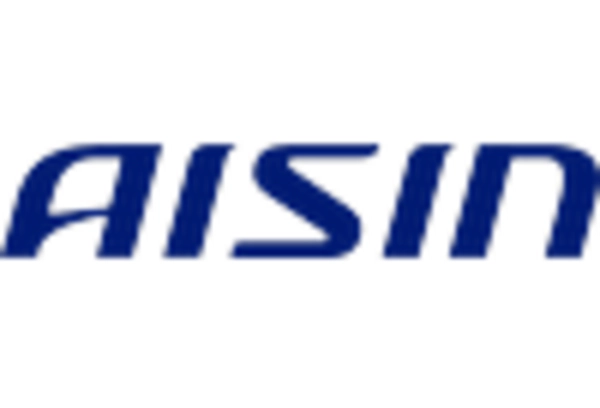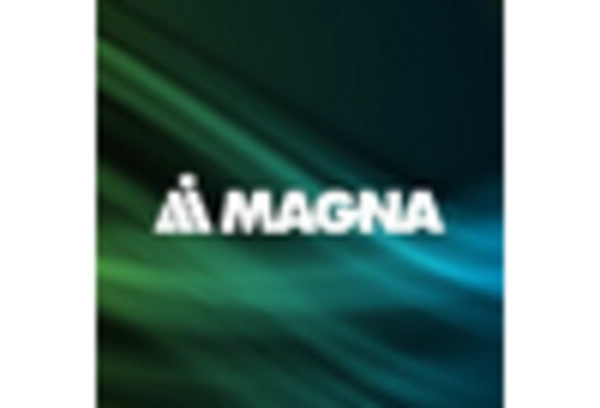Rising Demand for Performance Vehicles
The torque vectoring market is experiencing a notable surge in demand for performance-oriented vehicles. As consumers increasingly seek enhanced driving experiences, manufacturers are integrating torque vectoring systems to improve handling and stability. This trend is particularly evident in the sports car segment, where torque vectoring technology is becoming a standard feature. According to recent data, the performance vehicle segment is projected to grow at a CAGR of approximately 8% over the next five years. This growth is likely to drive investments in torque vectoring market technologies, as automakers strive to meet consumer expectations for superior performance and agility.
Regulatory Push for Enhanced Safety Standards
The torque vectoring market is also being propelled by regulatory initiatives aimed at improving vehicle safety. In the US, government agencies are increasingly mandating advanced safety features in new vehicles, which often include torque vectoring systems. These systems contribute to enhanced stability and control, particularly in adverse weather conditions. As a result, automakers are compelled to adopt torque vectoring technologies to comply with these regulations. The market is likely to see a steady increase in demand as safety standards evolve, with projections indicating a potential growth of 6% in the torque vectoring market over the next few years.
Consumer Preference for All-Wheel Drive Systems
The torque vectoring market is benefiting from a growing consumer preference for all-wheel drive (AWD) systems. As more drivers seek vehicles that offer improved traction and handling, manufacturers are increasingly incorporating torque vectoring technologies into their AWD systems. This trend is particularly pronounced in regions with challenging weather conditions, where AWD vehicles are favored for their enhanced performance. Market analysis suggests that the demand for AWD vehicles is expected to rise by approximately 10% in the coming years, thereby driving the torque vectoring market as automakers strive to enhance their offerings with advanced torque distribution capabilities.
Increased Investment in Electric and Hybrid Vehicles
The torque vectoring market is poised for growth due to increased investment in electric and hybrid vehicles. As automakers pivot towards electrification, the integration of torque vectoring systems is becoming essential for optimizing performance and efficiency. Electric vehicles (EVs) benefit from the instantaneous torque delivery that torque vectoring provides, enhancing acceleration and handling. Recent reports indicate that the EV market is projected to grow at a staggering rate of 20% annually, which could significantly impact the torque vectoring market. This shift towards electrification is likely to encourage further innovation and development in torque vectoring technologies, aligning with the industry's broader sustainability goals.
Technological Advancements in Automotive Engineering
Technological innovations in automotive engineering are significantly influencing the torque vectoring market. The development of sophisticated algorithms and control systems has enabled more precise torque distribution among wheels, enhancing vehicle dynamics. These advancements are particularly relevant in the context of all-wheel-drive systems, where torque vectoring can optimize traction and stability. The torque vectoring market is expected to benefit from these innovations, as they allow for improved performance in various driving conditions. Furthermore, the integration of machine learning and artificial intelligence into vehicle systems may further refine torque vectoring capabilities, potentially leading to a market growth rate of around 7% annually.

















Leave a Comment